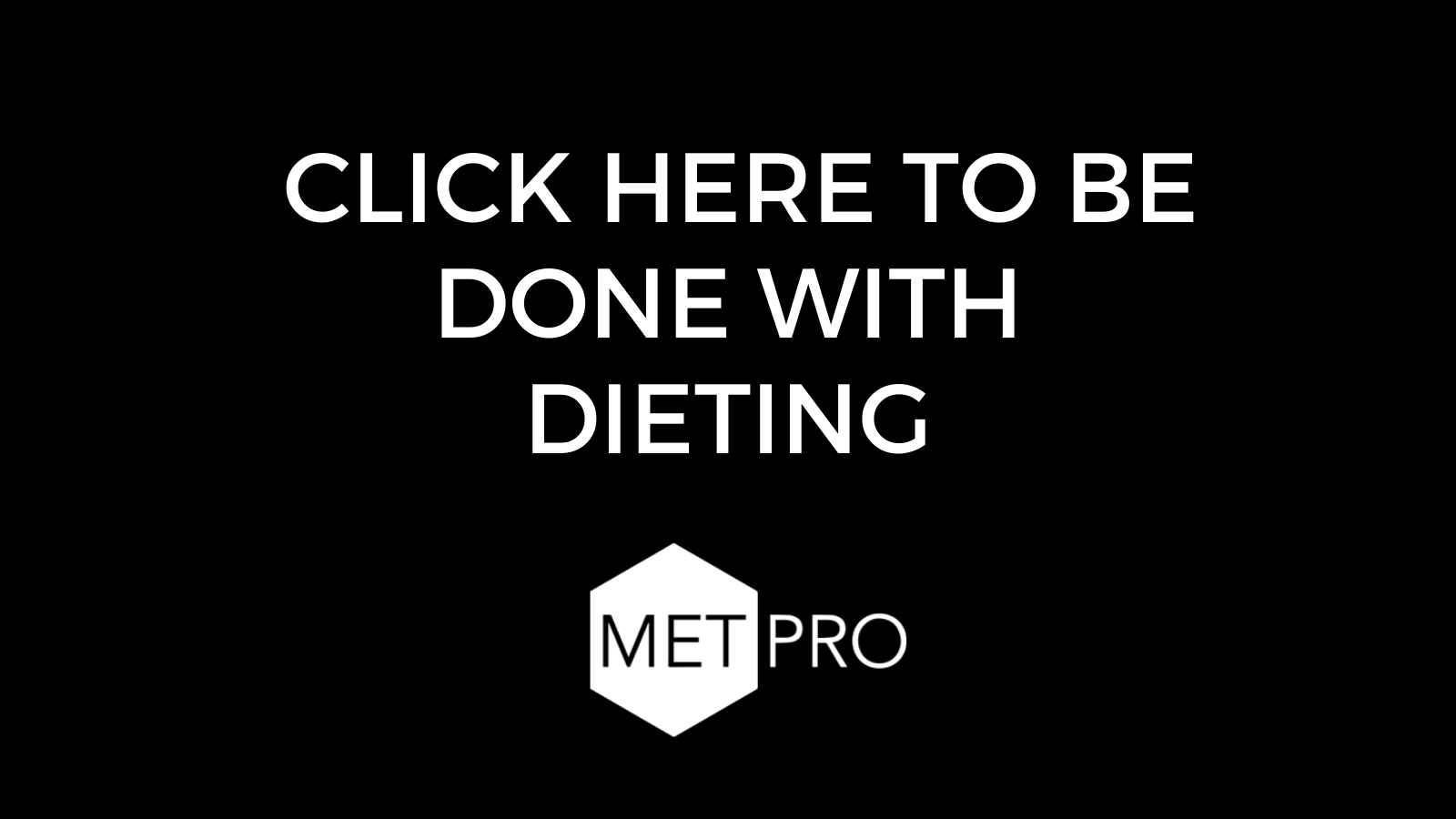I am joined by MetPro Founder, Angelo Poli. We are discussing a series of weight loss myths. We want to talk about intermittent fasting. What is it? What is not it? What has MetPro found? Angelo, thank you so much for joining me.
Thanks for having me, Crystal.
When it comes to intermittent fasting, there is so much information out there. One of the things that I have heard over and over again is that limiting your food to certain hours of the day is the primary reason that intermittent fasting leads to weight loss. True or false?
That will be false. That is what we are finding. We are going to limit our context, not to medical or health. We are going to limit the context to metabolism and weight loss. There are so many like we cover in this series and different approaches to weight loss. There’s neither good nor bad. It is our job at MetPro to help explain what it is and what it is not so that every tool can be used most effectively. That is the most common myth when it comes to intermittent fasting from a weight loss perspective, as it’s assumed that the fasting window is what triggers the weight loss. It is talked about that way.
The truth is consuming less calories is the primary trigger for weight loss when implementing intermittent fasting. The truth is, with all dieting, it is going to be either some way, shape, or form, calorie restriction or carbohydrate restriction that is going to be the trigger. Here is what that means. Consecutive fasting hours place your body in a hormonal state that may, for some, encourage light weight loss. However, its impact is secondary to the total caloric intake. Restricting food to a smaller feeding window typically results in reduced calorie intake. That is what, at the end of the day, is the primary motivator in triggering weight loss.
Here is a way to think about it. If you wanted to do an impartial test, you would track what you are eating and reproduce that same caloric intake, the same diet, just within a tighter window and see what the difference is. What you are going to experience is the difference is going to be marginal, especially if it is a modest fueling window, which is most common, 8, 10 hours, whatever the case may be. If you were eating the same meal, if you were eating grilled chicken breast, sweet potato, green beans, and a little bit of olive oil. That was your meal and you are eating that four times a day.
If you continue eating that, but now just tighten up the window that you are eating it within, some people might experience minor weight loss effects. Some people might go slightly in the opposite direction, but the change is going to be mostly marginal. What happens is when you are restricting the timeframe with which you are eating, it is a potent gamification method that encourages reduced calories. For someone who is not supposed to eat at breakfast or eat after dinner, whereas maybe naturally they would be doing extra snacking, what is taking place is cutting out some extra calories. That reduction in caloric intake is not the only, but it is the principal trigger for weight loss.
I will read our actual findings as written by MetPro, “At MetPro, we have learned that the practice of time-restricted eating does have some merit, especially if poor impulse control or overconsumption is a big factor. However, our data suggest that there may be other methods of appetite control that prove more effective over time. Even if some time-restricted eating is utilized, taking a multidisciplinary approach that also allows for calorie management, glycemic control, and custom macros provides a better outcome.” In other words, time-restricted eating or time gating almost exclusively focuses on when you eat. If you are going to implement that, it is still to your advantage to consider what you eat. That has been our findings.
That helps with that, but there are other myths that are out there. What about the one that you hear all the time? “Abstaining from food during a portion of the day speeds up my metabolism.” How does that work?
The truth is the more you often eat, the more opportunity your metabolism has to run at full throttle. Here is the counterbalance. Eating too infrequently can lead to a slower metabolism, while eating too often can result in overconsumption. A balance for you must be maintained that meets your needs. There is a balance there. However, here is what our stated findings have been over watching many people over periods of time.
“At MetPro, our data clearly indicates that individuals are eating more food, not less, as their training increases have the fastest metabolic rates, short periods of carefully planned calorie increases have a powerful, revving effect on a slow metabolism. Our data suggest that spreading these calories across more meals, not less, produces the best results.”
This goes back to a broader concept, to snack or not to snack? If you go back and if you look at physique sports, the bodybuilders, the physique competitors, what you are going to find dominant in that industry is frequent fuelings of smaller meals or the case may be frequent fuelings of larger meals. It is frequent fuelings.
The studies from the weight loss industry essentially said we have run comparisons eating 2,000 calories a day spread across five or six meals in 2,000 calories a day spread across three meals. What we have found is there is not much of a difference. That is a true thing, but they are not taken into consideration. They are taking a consideration just from the standpoint of that meal plan, weight loss, the difference is marginal. What they are not thinking about is, “How do we rev the metabolism?” The way we rev the metabolism in step with exercise is actually increasing fuel.
What we have observed very pointedly at MetPro is when we increase someone’s intake, being able to spread it across more meals allows for better toleration. For example, if I have to increase someone’s carbohydrate intake and I want to get them used to eat 100 grams a day more, if I have 5 or 6 meals to spread that out across versus just 2 or 3, it is much more likely I am going to be able to gradually add those 100 grams over the course of some time with no weight gain in the case of the person who is spreading out across the 5 or 6 meals, which is why, especially across the board, we like snacks.
That is a more behavioral reason, but from a metabolic standpoint, the conclusion we have come to is during periods of revving your metabolism, the goal is to force your metabolism to speed up. The more frequently you are eating, the better because we can keep the meals smaller and we can add smaller amounts across multiple meals. That has a very potent revving effect.
MetPro has observed the complete opposite of what that myth says.
In this case, yes.
What about this one? “I will perform my best if I only fuel during certain hours of the day.” I hear this one a lot.
Typically, you are not going to hear this a lot from your really competitive, high-performing athletes. There are exceptions. Here is where this comes from. This comes from the concept of, “When I try and train on a full stomach, I feel sluggish.” That is all true, but the concept of, “When I have less fuel, I am going to perform better.”
We have many years of sports nutrition that state quite the opposite. The truth is you will perform your best when carbohydrates, your body’s preferred fuel source for intense activity and vigorous activity, is available when the demand arises. Carbohydrates positioned around training can provide the needed fuel for both performance and the recovery to perform at your best.
Protein is used for muscle repair, but remember, you can only absorb approximately 25 grams of protein at once. While protein is forgiving as to the time of day you take it in, you do not have to have it immediately post-workout, but be that as it may, spreading the protein out over multiple meals still has its advantages, especially for athletes with higher protein requirements.
Here have been our findings at MetPro, “While our findings indicate that it is possible to perform at a very high level of performance with a modest eating window, we have observed a drop in performance when that window is too restrictive. The effects appear to be most pronounced among individuals pursuing muscular developments,” in other words, when you are trying to build muscle, “Or endurance athletes where training is falling outside of those fueling windows, especially.”
That makes sense because if you are training for a marathon or something, you cannot do that on an empty stomach. If you wanted to sum all this up, what I am hearing you say is that intermittent fasting is not necessarily a bad thing, but it is not necessarily effective for weight loss all by itself. It is the restriction of calories that is, and you can actually get more bang for your buck by pairing intermittent fasting or slightly restricted windows with being very specific about the types of food that you are eating.
That has been exactly our findings. This is what we do for each modality. We evaluate who might most benefit from a particular modality. In this case, people that tend to have a naturally faster metabolic rate do better with some time restriction versus people with already a slow metabolic rate. That seems like, “Well done. You have a fast metabolism.” In this case, it is even more pronounced because if the reason somebody is having a hard time managing their weight is because of over consumption, not because of slow metabolism, sometimes time gating your food can be very effective and useful.
I will give you an example of where I have used time gating for some of my clients. I had an athlete, a gentleman who was very athletic, strong and competed, but he had an appetite that would not quit. This guy was hungry. A lot of us are going, “I can relate. I am the same way.” Here is his schedule. He was getting up in the morning, having breakfast, and then training at 5:30 AM.
By noon, he needed to have two snacks. He was ravenous. He ate twice before he got to lunch. At lunch, he would need a big lunch, and then he would need a snack in the afternoon, and he would have dinner. Sometimes he would still be hungry at night. Even as clean as those meals were, he was eating for so many hours of the day. His total intake numbers were just beyond the threshold of where his current metabolic rate was.
He was not losing weight. In his case, we were able to adjust his schedule and move his training to the afternoons. That enabled him to actually wake up and not have breakfast for a couple of hours. We did not go half the day, but he was having breakfast at 9:00 AM. Also, he was not training first thing in the morning, so he did not have that jolt to his appetite. He was able to have breakfast and then go into lunch, have his snacks in the afternoon, train in the evening, and then have dinner, still eating very clean. That was the key in his case to unlocking his ability to get his intake threshold where it needed to be to trigger weight loss for him.
I will give you a counter example, not me time gating their food. You have been restricting calories. You already restrict calories. You already watch carbohydrates. When you do the math, you are already eating, let’s say for a woman, about 1,200 calories a day. We want to try intermittent fasting because our friend says, “It works great.” They try it. Lo and behold, you did lose more weight. Let me do the math for you on that.
We have to do the calculations. That means that you continue eating what you are already eating, which is only adding up to a minimum of calories. You cut 1/3 of that out. That will result in a little more weight loss now. First, there are energy, performance, health, and safety concerns if you take that too far, but from a metabolic standpoint, that puts you in a real predicament because it is a credit card scenario.
It is a buy now, pay later. If you do the math and you find that your intermittent fasting protocol is dropping you below 1,000 calories a day most days, there is going to be interest on that because remember your metabolism will adapt over time to that. What are your next steps? Where do you go from there? There is only one direction.
That is why we like to just be purposeful and educated before we implement these strategies and know what we are getting into. That last demographic that we have identified where a form of time gating food can be useful for is sometimes people associate gamification as a bad thing. It is not. It can be very useful. If gamification helps you not snack after dinner, what do we usually snack on after dinner?
Nothing good.
As we look at these different methods and modalities, do not ever look through the scope of, “This is good. This is bad. This works and that does not.” Look through the scope of, “What is the underlying science behind it? How can it help me in my case?”
That sums up exactly what MetPro is always doing. It is looking at each individual person and what works best for them. You summed up very nicely, Angelo. Anything else you want to share with folks about intermittent fasting before we move on?
That is what our coaches were here before. If you are participating in it and want to see if there is a way to optimize it further, we can help you with that. If you are considering it and want to know if that would be an approach that we would work into a program for you, talk with one of our experts and we will look at your personal scenario and explain the pros and cons and how it would be best implemented.
If anybody is interested in that, the best place to go is to MetPro.co. That is all for this episode, readers. If you would like to tune into more of these episodes, you can find all the episodes anywhere you get podcasts or you can also go to MetPro.co/podcast. Please be sure to rate and review. Follow the show, that lets everyone else know what they can expect. You can learn more about MetPro at MetPro.co. I will be back next time. Remember, consistency is key.






